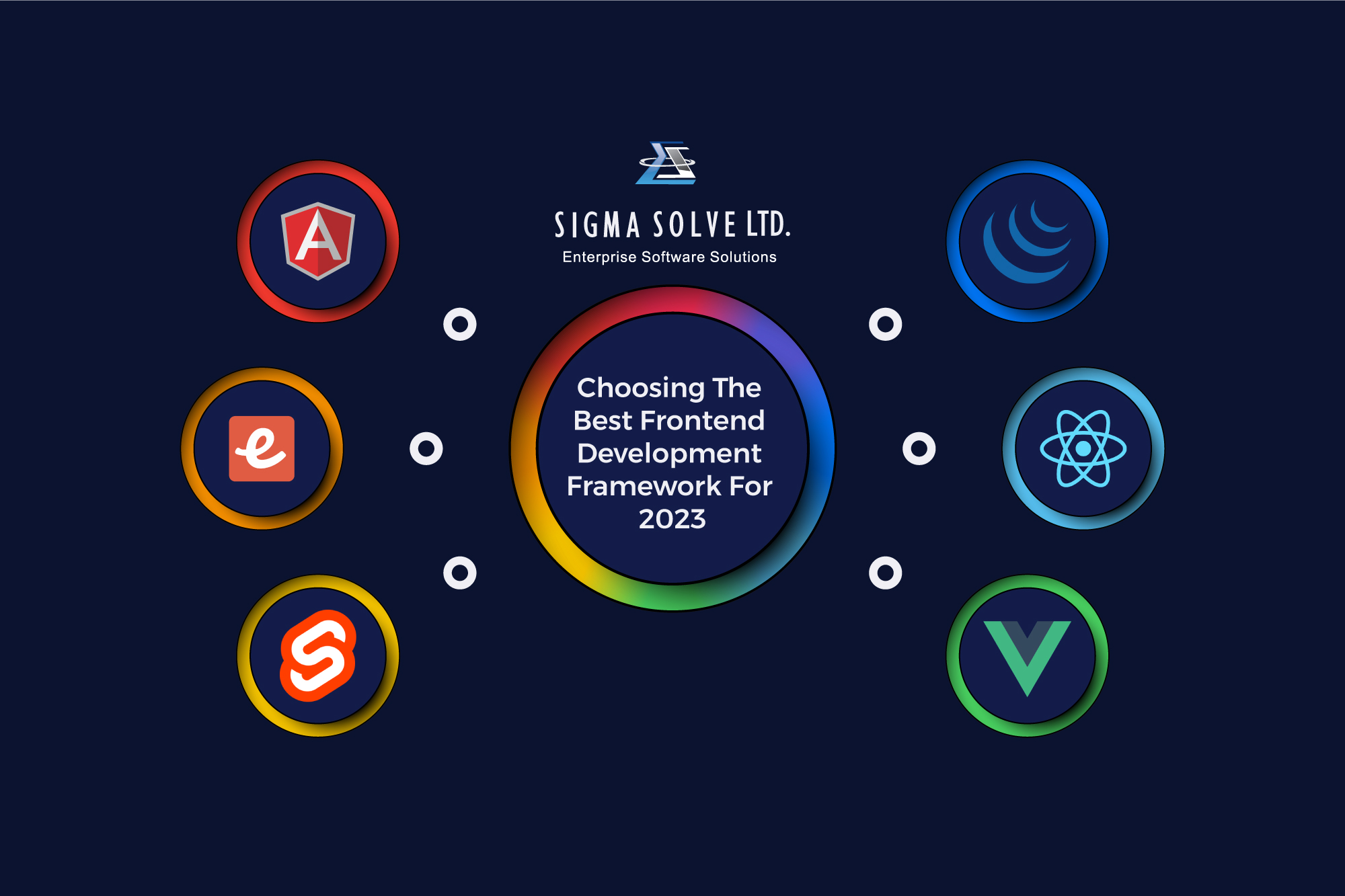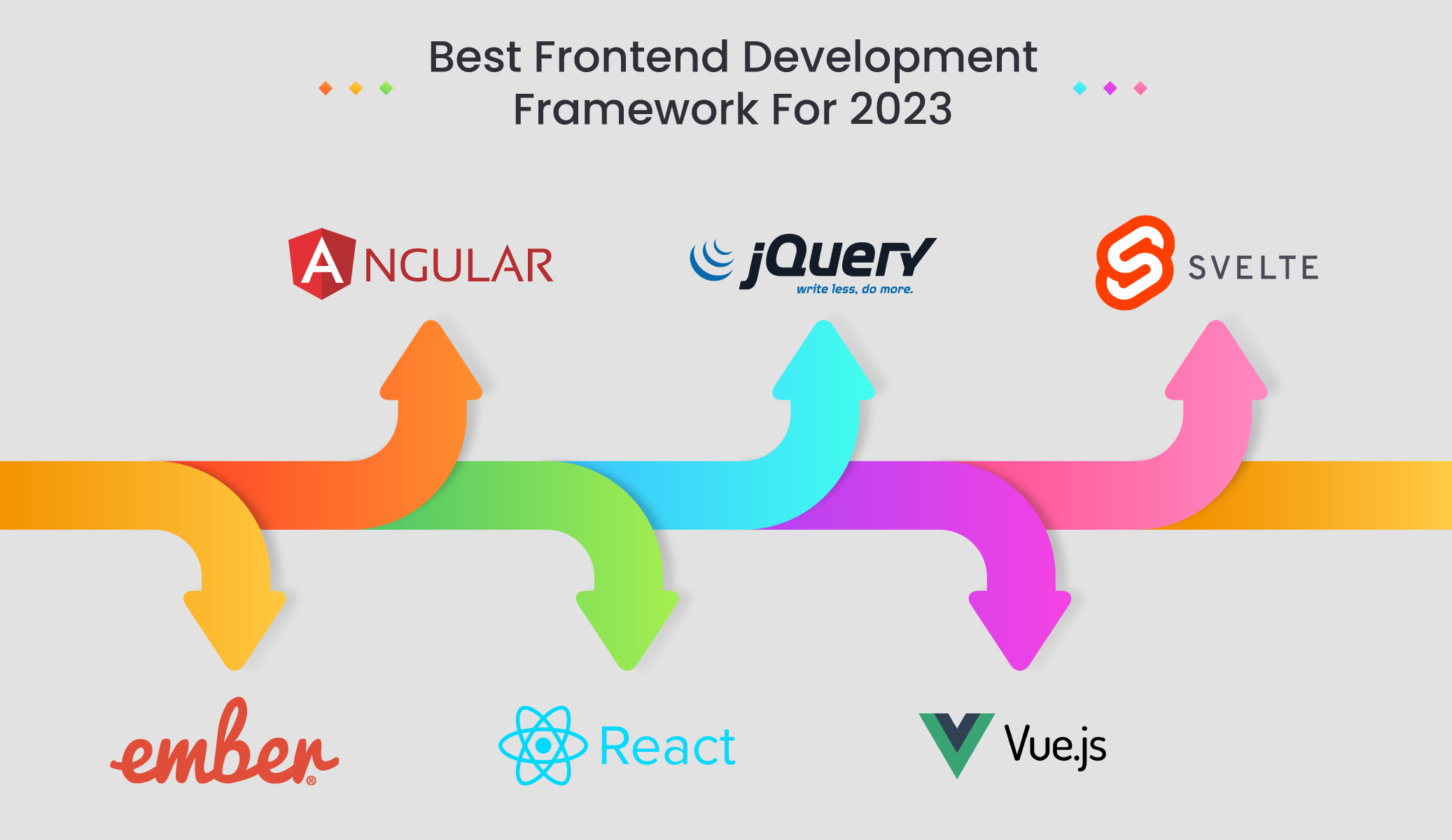Frontend frameworks are an essential part of the web development process, allowing developers to create dynamic, interactive websites and applications quickly and easily. But with so many frameworks to choose from, it can be difficult to determine which one is best for your project. That’s why it’s important to stay up to date on the latest trends and developments in the world of front-end frameworks.
In this article, we’ll take a look at what frontend frameworks are, the advantages of using them, the popular frontend frameworks, and the best frontend framework for 2023. We’ll also provide reasons that rank this as the best frontend framework.
Let’s get started.
What are frontend frameworks?
It is important to first understand what a frontend framework is before delving into which one is the best. But what is the front end? The frontend is the client side of a web application, which is the part that users interact with directly in their web browser. The frontend consists of the HTML, CSS, and JavaScript code that runs in the user’s web browser and is responsible for rendering the user interface and handling user interactions.
Hence, frontend frameworks are used to develop the frontend. They are libraries of code that provide developers with a structure for building websites and applications. They provide a set of tools and components that make it easier to create a website or application quickly and efficiently. They also provide a consistent look and feel to a website or application, making them easier to maintain and update.
Frontend frameworks typically include a set of pre-written HTML, CSS, and JavaScript code that can be used as a starting point for building a web application. They often include features such as responsive design, cross-browser compatibility, and mobile-first design to make it easier to build modern, responsive web applications.
Some common tasks that are typically associated with frontend development using a framework include:
- Designing and implementing the user interface: This includes creating the layout, visual design, and navigation for the web application.
- Implementing logic and functionality: This may include tasks such as form validation, handling user input, and interacting with APIs to retrieve and display data.
- Optimizing performance: This may involve techniques such as code-splitting and tree shaking to reduce the size of JavaScript bundles and optimize images and other assets for faster loading.
- Testing and debugging: This may involve writing and running unit tests to ensure that the code is working as intended, as well as debugging any issues that arise.
- Maintaining and updating the codebase: This may involve fixing bugs, adding new features, and refactoring code to improve its structure and maintainability.
We have now understood what a frontend framework is, but why do you need a frontend framework? Here are several advantages to using frontend frameworks.
Advantages of using frontend frameworks
- Increased speed and efficiency: By using a framework, developers can quickly create a website or application without having to start from scratch. This saves time and reduces the amount of code that needs to be written.
- Improved performance: Frameworks are designed to take advantage of modern web technologies, such as HTML5 and CSS3, to ensure that websites and applications are fast and responsive.
- Reduced development costs: Using a framework can also help to reduce development costs, as developers don’t have to write as much code.
- Consistent look and feel: Using a framework ensures that the design of a website or application is consistent across all devices.
- Easier maintenance: Because the code is structured in a consistent way, it’s easier to maintain and update a website or application.
The Most Popular Frontend Frameworks
There are many top frontend development frameworks to choose from. Some of the most popular frontend development frameworks include:
1. React
React is a popular JavaScript library for building user interfaces. It is developed and maintained by Facebook, and is known for its high performance and flexibility, making it a good choice for large and complex applications.
React uses a virtual DOM (a virtual representation of the actual DOM) to efficiently update the DOM when the state of an application changes. It also provides a declarative syntax for building user interfaces, which allows developers to describe the structure of their applications using reusable components.
React is well-suited for building large and complex applications and is used by companies such as Facebook, Netflix, and Airbnb. It is known for its strong developer community and extensive documentation and has a wide range of third-party libraries and tools available.
2. Angular
Angular uses a component-based architecture, which allows developers to build their applications as a set of reusable, modular components. It also provides a reactive data model, which means that the framework automatically updates the DOM when the state of an application changes.
Angular is known for its strong emphasis on convention over configuration, which can make it easier to build large, complex applications. It is a good choice for building enterprise-level applications and is used by companies such as Microsoft and Asana.
3. Vue
Vue.js is a progressive JavaScript framework for building user interfaces. It is designed to be easy to use and flexible and is popular for its lightweight size and simple syntax.
Vue.js uses a template-based syntax for building user interfaces, which allows developers to declaratively describe the structure of their applications. It also provides a reactive data model, which means that the framework automatically updates the DOM when the state of an application changes.
Vue.js is well-suited for building small to medium-sized web applications and is a good choice for teams new to frontend development. It is known for its ease of use and good documentation and has a growing community of developers and contributors.
4. Ember
Ember.js is a comprehensive JavaScript framework for building single-page web applications. It is designed to make it easy to build complex applications by providing a set of conventions and best practices that make it easier to structure and organize code.
Ember.js has a strong focus on convention over configuration, which means that it provides a set of default behaviors and patterns that developers can follow to build their applications. This can make it easier to build large, complex applications, as developers don’t have to spend as much time configuring the framework.
Ember.js is known for its robust set of features and tools, including a powerful router, an integrated data layer, and a built-in testing framework. It is a good choice for building large, complex single-page applications and is used by companies such as LinkedIn and Microsoft.
5. Svelte
Svelte is a relatively new JavaScript framework that is designed to be lightweight, fast, and easy to use. It uses a unique approach to building user interfaces.
Unlike other frameworks that use a virtual DOM (a virtual representation of the actual DOM) to update the DOM when the state of an application changes, Svelte takes a different approach. It compiles the application code into vanilla JavaScript that manipulates the DOM directly, which can result in improved performance and smaller bundle sizes.
Svelte is particularly well-suited for building small, interactive applications and is known for its simple syntax and ease of use. It is a relatively new framework, but it has gained a strong following due to its innovative approach to building web applications.
6. jQuery
jQuery is a popular JavaScript library that was designed to make it easier to manipulate HTML elements, handle events, and animate elements on a web page. It was created in 2006 and quickly became one of the most widely used JavaScript libraries due to its simplicity and the wide range of tasks it could perform.
jQuery provides a set of easy-to-use functions and methods that allow developers to perform common tasks such as selecting and manipulating elements, handling events, and making AJAX requests. It also provides a wide range of utility functions and plugins that can be used to extend its functionality.
Although jQuery is still widely used, in recent years it has faced competition from newer JavaScript libraries and frameworks that offer similar functionality and often better performance. As a result, it is important to carefully evaluate the specific needs of your project to determine whether jQuery is the best fit for you.
The Best Frontend Framework
It is difficult to say which frontend development framework is the “best,” as it ultimately depends on the specific needs and requirements of your project. Some frameworks may be better suited for certain types of projects, while others may be better for others.
However, after going through numerous studies, surveys, and various ranking factors, we came to the conclusion that the React frontend framework is the best frontend framework.
Here are several reasons why React ranks as the best frontend framework for 2023, not just for us but for millions of people:
1. Virtual DOM
React uses a virtual DOM, which is a virtual representation of the actual DOM, to efficiently update the DOM when the state of an application changes. This can improve performance, especially for large and complex applications.
2. Reusable components
3. Strong developer community
4. Wide range of third-party libraries and tools
There is a wide range of third-party libraries and tools available for React, which can make it easier to add new features and functionality to your application.
The Bottom Line: Get Ahead Of The Curve with Sigma Solve
Frontend frameworks are an essential part of the web development process, allowing developers to create dynamic, interactive websites and applications quickly and easily. We’ve looked at what frontend frameworks are, the advantages of using them, the most popular frontend frameworks frontend, and the best framework for 2023.
Now that you know the top frontend frameworks, it’s time to get started! We at Sigma Solve can help with your digitization. We are a consulting company that provides digital solutions and helps organizations optimize their business processes. We have 15 years of industry experience, and we aim to help clients transform their businesses and create better customer experiences using the latest tools and technologies.
Sony, Kawasaki, and Trimble are a few of the customers who trust us. Consult with our experts today for the best digital transformation on the market. We’ll ensure you remain competitive and ahead of the curve in 2023.











